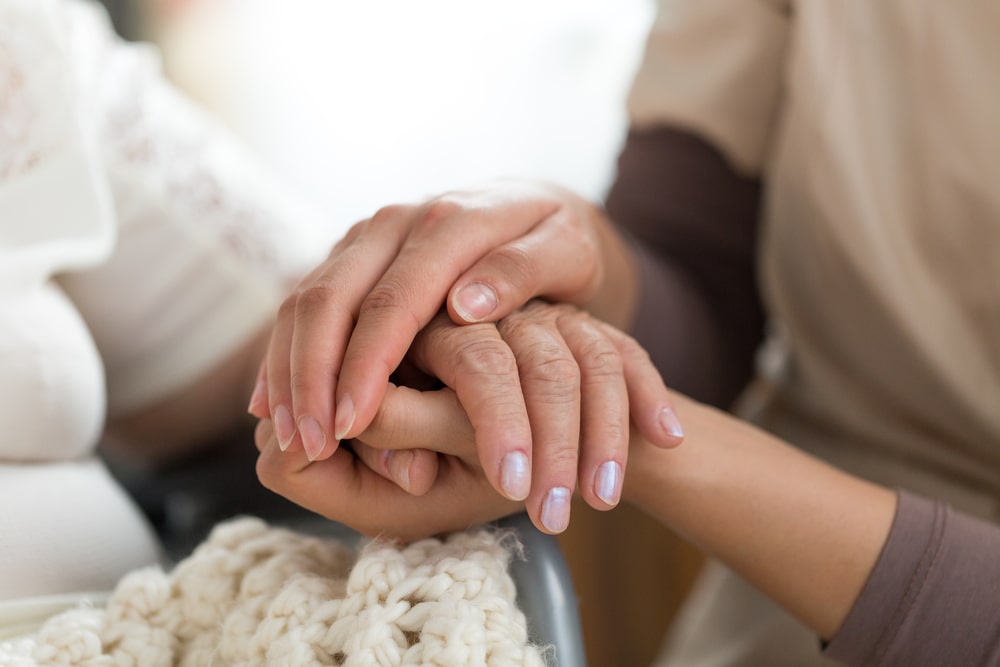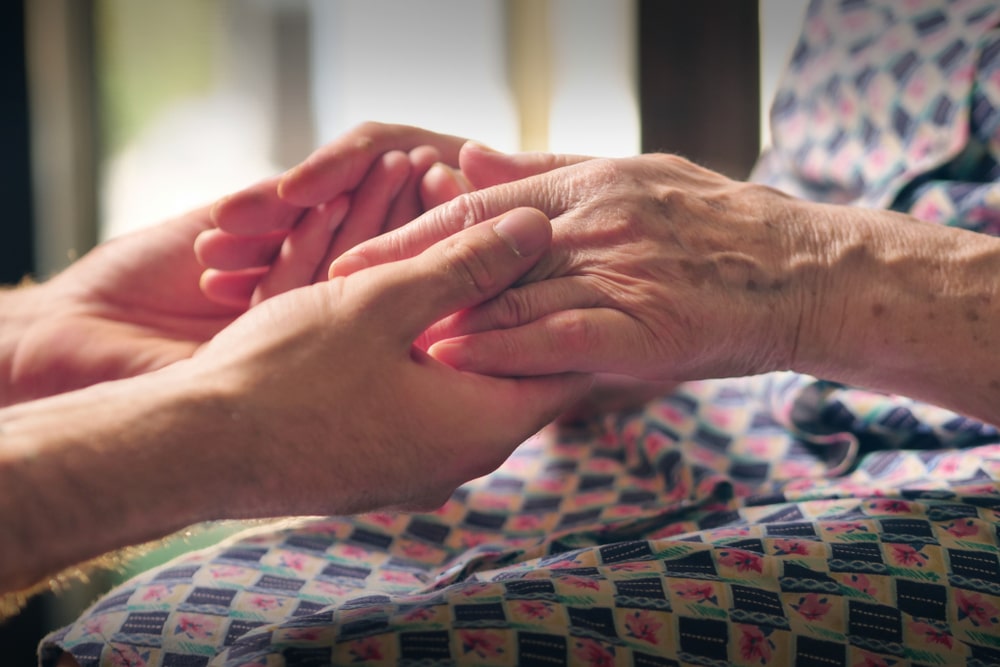
If you or a loved one have recently entered hospice care, all of the jargon and terminology may feel daunting and foreign. For many people, two terms that often become confusing are palliative care and hospice care. Today, let’s break these two terms down so that you feel more comfortable and knowledgeable. After all, understanding what’s going on around you can help create a little bit of control in an uncertain situation.
What is Palliative Care?
First, let’s talk about palliative care and get a sense of what it provides.
Definition
In short, palliative care refers to the day-to-day care and emotional support provided to someone with a life-threatening illness as doctors pursue a cure (age doesn’t matter). In other words, curative treatments and palliative care occur simultaneously.
For example, a person dealing with a stage 4 cancer diagnosis will receive palliative care as they go through the treatments prescribed by their doctor. Palliative care begins with a diagnosis and only ends when 1) the person gets well or 2) it becomes clear that the person isn’t going to survive their illness.
Who provides palliative care?
The primary care physician oversees palliative care. When a person begins to receive care, a team is assigned to them. This team will work with the patient and their family to provide medical, emotional, physical, social, and practical support.
The palliative care team is made up of doctors, nurses, social workers, nutritionists, and chaplains (based on the patient’s needs). Each member of the team focuses on different aspects of the patient’s overall well-being and care.
What is the purpose of palliative care?
Some illnesses and treatment plans take a harder toll on the body. Palliative care seeks to enhance a person’s life by focusing on quality of life – for both the patient and their family.
Not only does palliative care focus on easing symptoms, the palliative care team also desires to help patients understand their treatment options so they can make the choices most appropriate for their specific needs.
Where can a person receive palliative care and is it covered by insurance?
Thankfully, palliative care is available at many different types of facilities. You can receive it at hospitals, nursing homes, outpatient palliative care or specialized care clinics, or even at home.
As for insurance, it’s best to check with your insurance provider, though many plans do include some form of coverage. If you are a veteran, check with the Department of Veterans Affairs to see if they might cover palliative care.
How do I request palliative care?
If you think palliative care is the best next step, your primary care physician can refer you to a palliative care specialist. However, if your doctor doesn’t mention it on their own, don’t be afraid to ask!
What is Hospice Care?
Now that you have a better understanding of palliative care, let’s compare it to hospice care.
Definition
Hospice care refers to the care provided to those who have received a terminal diagnosis (often with a prognosis of six months or less). However, an illness’s timeline can change so it’s possible to receive hospice care for longer than six months, if needed. Hospice care focuses on pain and symptom management since patients in hospice care are no longer seeking a cure.
Who provides hospice care?
Similar to palliative care, patients are provided with a hospice care team made up of doctors, nurses, social workers, nutritionists, volunteers, and chaplains (as needed) that provide a variety of services. However, hospice care is overseen by the hospice medical director rather than the person’s primary care physician.
Regardless, everyone works together to ensure that both the patient and their family are receiving the holistic care they need. The team will visit regularly and is available by phone.
What is the purpose of hospice care?
Hospice care seeks to provide care, comfort, and quality of life to the person who is dying. At this point, the patient understands that their body is no longer responding to medical treatments. The hospice care team steps in to offer comprehensive care for medical, physical, practical, and spiritual needs.
Additionally, the hospice care team provides much-needed assistance to family members and friends as they grapple with the day-to-day demands of caring for a loved one with a terminal illness.
Where can a person receive hospice care and is it covered by insurance?
In most cases, hospice care is received at the home, but it is also available at assisted living and nursing home facilities, hospitals, and hospice centers.
Both Medicaid and Medicare offer coverage for hospice care (as do most other insurance companies), but you will need to call to get the specifics of your particular plan. Again, if you are a veteran, don’t forget to check with the VA.
How do I request hospice care?
If you confer with your doctor and decide not to pursue life-saving treatments, you can start talking about hospice care. Most often, the doctor will bring it up, but if not, ask. There are some minimal eligibility requirements you can read about here.
Let’s Recap
As you can see, hospice care and palliative care are quite similar. Both involve putting together a team of qualified professionals to assist a patient and their family medically, emotionally, physically, spiritually, and practically. Both involve easing pain and symptoms related to a life-threatening condition.
The main difference between the two relates to ongoing curative treatment. With palliative care, the patient is still actively seeking a cure, while those in hospice care have exhausted all curative options and are focusing on quality of life.
With these terms defined, hopefully you will feel empowered to ask for what you need when you need it. After all, both palliative care and hospice care options are available and will offer caring support during a difficult season of life.




























































